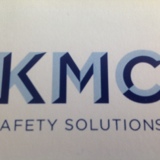Information
-
Audit Title
-
Client / Site
-
Conducted on
-
Prepared by
-
Location
-
Personnel
1. Working at Heights
-
1.1. Fall risks of 6ft or more?
-
1.2. Lack of edge protection?
-
1.3. Unsafe or incomplete edge protection?
2. Plant and Equipment
-
2.1. Unsafe or damaged plant/equipment? (including missing or damaged guards)
-
2.2. Incorrect plant /equipment for job? (e.g. grinding discs for cutting)
-
2.3. Unsafe or incompatible attachments used with plant/equipment?
-
2.4. Unlicensed operators?
-
2.5. Lack of safe work instructions?
-
2.6. Lack of training in safe operation, clean-up and maintenance?
-
2.7. Lack of LOTO procedures for cleaning, servicing and maintenance?
-
2.8. Lack of inspection regime?
3. Scaffolds
-
3.1. Unlicensed persons erecting scaffold above 4m?
-
3.2. Unsafe or incomplete scaffold?
-
3.3. Lack of inspection protocol for scaffold?
-
3.4. Incompatible scaffold components? Unlabelled or do not meet AS?
-
3.5. Safe Work Load (SWL) exceeded? (tools, stored materials, number of persons)
4. Lifting Equipment
-
4.1. Unsafe or damaged plant?
-
4.2. Loads lifted over persons, close proximity to obstacles incl. overhead power lines?
-
4.3. Lack of maintenance, testing and inspection?
-
4.5. Lack of daily inspection protocol?
-
4.6. Unsafe or damaged lifting equipment, including ropes, slings, chains, hooks?
-
4.8. Unlicensed operators?
5. Harness and Equipment
-
5.1. Unsafe or damaged harness or equipment?
-
5.2. Incompatible hooks/equipment?
-
5.3. Unlabelled or does not meet AS?
-
5.4. Unsafe or uncertified anchor points?
-
5.5. Lack of inspection protocol for equipment?
-
5.6. Lack of or inadequate formal training for operators?
6. Ladders
-
6.1. Unsafe or damaged ladders?
-
6.2. Unsafe positioning of ladders?
-
6.3. Ladder not properly secured?
-
6.4. Ladder unsuitable for job? (e.g. metal ladder used for electrical work)
8. Hazardous Chemical (including fuel and oil)
-
8.1. Unsafe storage location? (e.g. flammables near ignition sources, spills could enter stormwater drains, etc)
-
8.2. Incompatible chemicals stored near each other?
-
8.3. Inadequate spill containment equipment?
-
8.4. Safety Data Sheets not accessible on site?
-
8.5. Lack of emergency procedures for injury/spills/fire etc?
-
8.6. Excessive quantities stored on site or in vehicles?
-
8.7. Insufficient ventilation?
-
8.8. Insufficient, or incorrect, PPE?
-
8.9. Unsuitable storage containers? (unlabeled or stored in food containers)
9. Emergency Response
-
9.1. Lack of, or no emergency plans for site?
-
9.4. Lack of, or inadequate first aid kits aid equipment for site?
-
9.5. Insufficient access to formally trained First Aiders for all shifts?
11. Personal Protective Equipment (PPE)
-
11.1. Lack of, or inadequate PPE (including sun protection)
-
11.2. Lack of system to issue, inspect, replace and monitor PPE?
-
11.3. Lack of training in safe use, clean-up and inspection of PPE?
12. Work Environment
-
12.3. Inadequate housekeeping?
13. Electrical Hazards
-
13.1. Unsafe electrical leads? (damaged, out of test date or untested)
-
13.4. Contact with overhead electrical lines?
-
13.5. Overloading outlets?
14. Environmental Hazards
-
14.1. Lack of/or inadequate Environmental Management plan (EMP)?
-
Potable water on site
15. Administrative Procedures
-
15.1. Lack of/or inadequate Site Safety Plan?
-
15.3. Lack of, or inadequate, induction for workers, contractors, visitors?
-
15.4. Lack or, or inadequate, supervisory arrangements?
-
15.5. Lack of/or inadequate training, licenses, skills, experience?
-
15.8. Lack of/or inadequate incident notification procedures?
-
15.9. Lack of, or inadequate, routine inspections, monitoring, audits?
Corrective Actions
-
Enter any corrective actions that will be undertaken
Sign Off
-
On site representative
-
Auditor's signature









